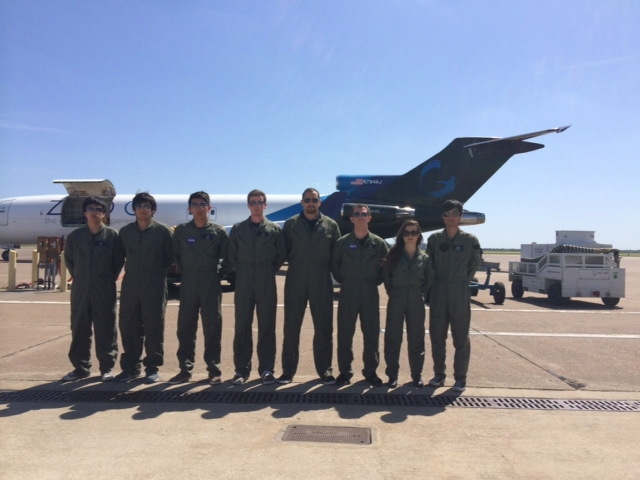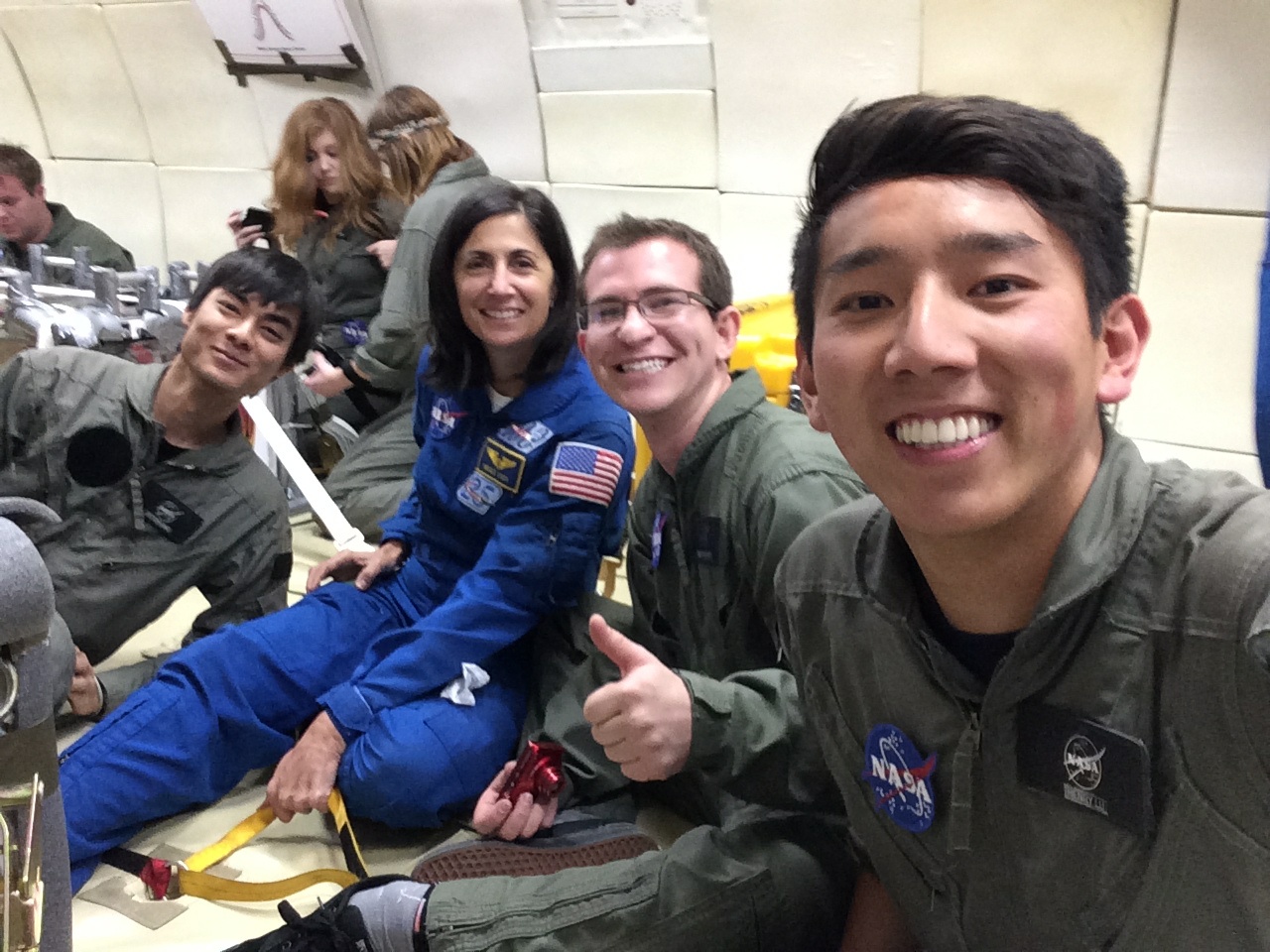Ignition! College Students Light Tiny Fires in Zero-G

HOUSTON — A slightly dazed group of college students they stepped off a ZERO-G plane to resounding cheers Thursday (April 10), pumping their fists to celebrate a weightless voyage packed with science experiments, including one test that sparked tiny balls of fire.
"It just turns into nothing — suddenly there's just nothing," Andrew Beeler, an aerospace engineering senior at the University of California, San Diego, said after the flight, trying to describe the strange sensation of weightlessness.
I'm here at Houston's Ellington Field with Beeler and seven other UCSD undergraduates, who are measuring how different fuels burn under weightless conditions as part of NASA's Microgravity University program. Right now, the cabin of the ZERO-G plane parked outside of a NASA hangar at Ellington Field looks like a science fair, with Stanford, Arizona State and UCSD banners hanging behind the student experiments strapped down to the padded floor. [Fun in Zero Gravity: Weightless Photos from Earth and Space]
Beeler and two of his classmates, Henry Lu and Victor Hong, took part in Thursday's flight, which created brief periods of zero-gravity during 32 parabolas over the Gulf of Mexico. All three students were effusive about awesome the experience was. Lu showed me videos he took during the period of simulated Martian gravity (a third of the pull of Earth), in which he did pushups with remarkable ease and other students bounded off the cabin floor.
Today it's was my turn. I've been drinking a lot of water to stay hydrated and I've been trying to internalize the "Feet down, coming out!" command I'll hear when I need to lie down or sit up straight, preparing to get pinned to the floor during a period of hypergravity when the plane starts pulling up for its next parabola.
I'm also excited to watch how the students' experiment plays out in real-time. On Thursday, the first group of UCSD flyers lit tiny droplets of ethanol and kerosene (separately) inside of a triple-contained box. I'll see three of the other UCSD students ignite butanol and E85 (a combo of ethanol and gasoline), creating small fires that are shaped like little orbs when they're free of gravity's pull.
Editor's note: You can follow the progress of this week's NASA Microgravity University Program flight via the program's Twitter feed @NASA_RGEFP and by following the hashtag #DefyGravity.
Breaking space news, the latest updates on rocket launches, skywatching events and more!
Follow Megan Gannon on Twitter and Google+. Follow us @SPACEdotcom, Facebook or Google+. Original article on Space.com.

Megan has been writing for Live Science and Space.com since 2012. Her interests range from archaeology to space exploration, and she has a bachelor's degree in English and art history from New York University. Megan spent two years as a reporter on the national desk at NewsCore. She has watched dinosaur auctions, witnessed rocket launches, licked ancient pottery sherds in Cyprus and flown in zero gravity on a Zero Gravity Corp. to follow students sparking weightless fires for science. Follow her on Twitter for her latest project.

